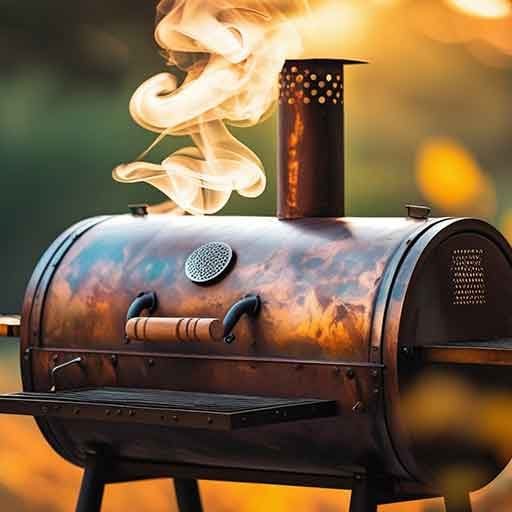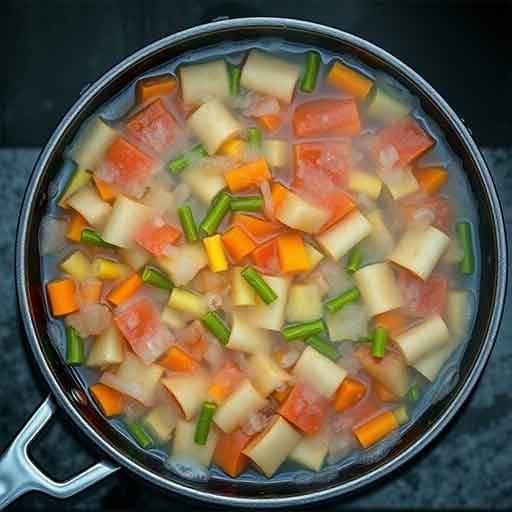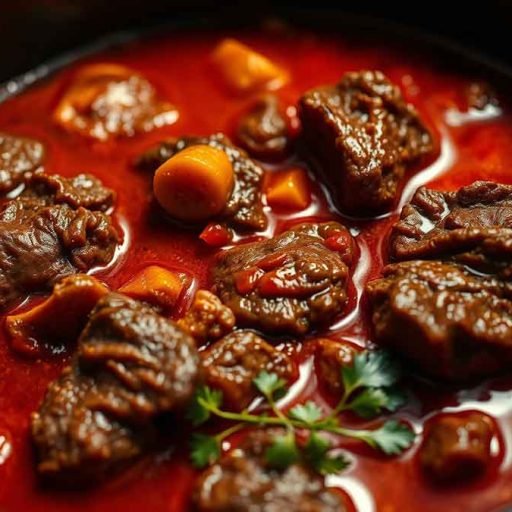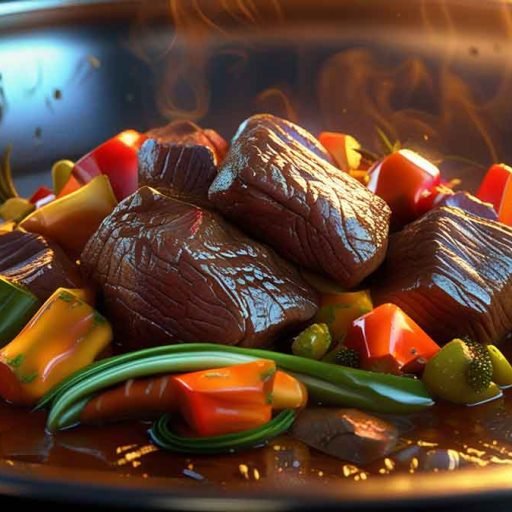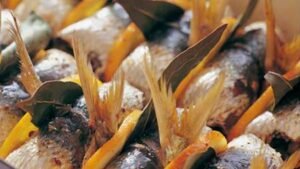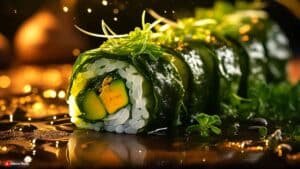Stir-frying is an ancient Chinese cooking technique similar to sautéing. A wok is used instead of a sauté pan; The curved sides and rounded bottom of the wok disperse heat efficiently and facilitate the almost constant tossing and stirring required for this cooking method. When stir-frying, the heat is kept at a constant high temperature. The wok should be heated till it smokes. When the pan is well heated, a few drops of water will evaporate immediately when added to the pan.
The fat used for stir-frying should have a high smoke point, such as peanut oil. High-temperature combination And the hot oil in a well-cooked wok produces the desired aroma known as wok. This Cantonese expression, often translated as “breath of the wok,” refers to the smoky flavor and aroma produced by droplets of fat that spark in mid-air as food is fried in the wok. is thrown away.
Stir-frying foods are typically cut into thin or small pieces to promote quick, even cooking. When different foods are cooked together, such as shredded carrots, cabbage, and snow peas, those that require the longest cooking time are added first. The ingredients should not be too wet when added to the pan. As with frying, sauces are often made in the pan while frying foods.
Before adding the sauce ingredients, use a flat metal spatula to move the food to the sides of the pan, then stir the food and toss it into the sauce. Due to the high temperature and fast speed of stir-frying, it is important to measure and thoroughly prepare all ingredients before starting to cook. Stir-frying is considered a healthy cooking technique when a small amount of fat is used to fry lean meat, poultry, fish, or vegetables.
Types of Stir-fry
Did you know that there’s more than one way to stir-fry? There are, in fact, four major techniques:
Wet Stir-Fry
Wet stir-frying is the opposite of dry stir-frying wet stir-fries use liquid, usually rice wine, stock, or a sauce of some kind.
Dry Stir-Fry.
Dry stir-frying means stir-frying without the use of liquid other than a small amount of oil, and sometimes a bit of soy sauce or Shaoxing rice wine. Essentially, there is no sauce.
Velveting
Velveting is coating an ingredient (usually a delicate protein such as fish, shellfish, or chicken) in egg white and cornstarch before stir-frying it poaching it, or briefly oil frying it before combining it with other ingredients for serving. Foods that have been velveted turn out tender and juicy.
Clear stir-fry
Clear stir-frying allows a single ingredient to be the star of the show. Oil, salt, and a hot wok are the only items needed to bring out the best in a seasonal vegetable or a protein.
What is WOK HEO?
Wok is a term associated with wok cooking. Translated, “wok hei” means “wok’s breath.” It’s the burnt flavor and smoky aroma when oil and food are added to a screaming hot wok. As the food cooks, the steam escapes and carries tiny droplets of oil, which ignite briefly when they come into contact with the burner flame. The flame’s heat transforms the oil, creating flavor and aroma particles. If you’re cooking on induction or electric burners, wok hei can be difficult to achieve and that’s okay. It can also be difficult to achieve on a gas burner. But don’t be discouraged your oud will still be delicious even if you don’t have a wok.
Taming the breath of a wok During stir-frying
Stir-frying is one of the most dynamic cooking techniques because you control the heat applied to the food primarily by tossing the ingredients. Using a constant circular motion that exploits the round shape of the wok, gather the food together and flip it off the metal. Please don’t allow the food to spend much time in direct contact with the hottest part of the work- the conduction zone- which can quickly scorch its surface. Lift the food pieces so that they spend most of their time cooking in the high-temperature steam in the conduction zone above the wok, with occasional for- ays into the drier, cooler air of the condensation zone.
The patina on the wok
The patina on the wok consists of black oxide, which prevents rust from forming on the metal, and a layer of decomposed fat, which bonds to the metal and yields a smooth, nonstick coating. Teflon and other modern nonstick coatings cannot replace the traditional patina and should never be used on a true wok. At temperatures greater than 260 °C/500 °F. Teflon breaks down, and at temperatures greater than 340 °C/645 °F, Teflon molecules decompose into toxic vapors.
The Basic Techniques of Bao and Chao
In China, wok cooking involves two fundamental techniques, known as bao and chao. The bao technique is the true stir-fry. The wok must be hot enough that it glows a dull red color. Only then does the cook add oil (usually a generous amount), seasonings, and meats rapidly. There is no room for hesitation; oil combusts, and food burns, almost instantly at temperatures this high.
Water in the food evaporates in a flash into steam, so juices do not leach out, accumulate in the bottom of the wok, and “stew” the food, as can happen in sauteing. Food browns very rapidly in wok cooking, and the rapid browning generates more flavorful compounds that result from Maillard reactions, more partially combusted cooking oil, and thus more characteristic wok hei flavors.
An expert at bao cooking keeps control by continually tossing the food in a circular motion, stopping for at most a few seconds to add vegetables or broth. With each rhythmic beat, the cook gathers the food together and flings it into the steam-filled air above the wok, which is cool compared to the metal glowing incandescently below.
Using food cut to the right size is crucial to success with the bao technique because the temperature gradients are so steep. Pieces must be small enough to cook all the way through before the outside of the food burns. Small pieces are also easier to gather and flip. Wok cooks using the bao technique exploit the curved shape of the wok by tilting it on the burner so that less of the wok is heated. The food comes into direct contact only with the cooler metal on the far side of the wok.
The chao technique is more akin to the Western technique of the covered saute. To cook using the Chao approach, heat the wok to a moderate temperature (not as hot as in the bao technique), then add cooking oil. Dry ingredients, typically garlic and ginger, come next. Meats, if called for, are then added and quickly seared. Vegetables and any liquids go into the wok last.
Usually, you cover the wok to let the liquids finish cooking the other ingredients by a combination of boiling and steaming. Because the chao technique does not require the staggeringly intense heat used in bao cooking, it is a good approach when using a burner of modest power. It is also an easier technique to master, whereas bao cooking demands the speed and agility that come only with years of practice and a healthy fear of the fire’s bite.
The Wok Trio: Ginger Garlic and Scallions
Aromatic and flavor-enhancing garlic, ginger, and scallions are considered the holy trinity of Chinese cooking. Not sure if you should slice it, mince it, or leave it whole? Our rule of thumb is the smaller the cut, the stronger the flavor. Want just a little flavor? Slice it. Want the flavor to smack you in the mouth? Grate it.
Garlic
Garlic is prized not only for its flavor and aroma but also for its healthy dose of antioxidants. Buy fresh bulbs that have tight heads and no germination (green sprouts at the top of the bulb). If your garlic starts to germinate, cut out the green sprouts (which can taste bitter) before use. Garlic will be kept for several weeks at room temperature.
Ginger
Pungent and great for digestion, fresh ginger is frequently added to marinades for its tenderizing effect on meats. Use a peeler to remove the peel before use. Fresh ginger can last for several weeks in a brown paper bag in your refrigerator’s vegetable drawer.
Scallions
Scallion whites have an intense oniony flavor and are typically cooked, whereas the greens have a mild, herbal flavor and are typically used for a garnish. Scallions will last for a week wrapped in a paper towel and placed in a plastic bag in the vegetable drawer or placed root-end down in a glass of fresh water kept on your kitchen windowsill!
How to Stir-Frying Foods
- Cut the food to be stir-fried into pieces as called for in the recipe.
- Heat a wok over high heat until it is so hot that a few drops of water will evaporate within a few seconds when added to the pan.
- Add enough fat (typically oil) just to cover the pan’s bottom. Carefully swirl the fat around the wok.
- Add any aromatics to the pan and fry, tossing the ingredients in the oil, to release their aromas for approximately 15–30 seconds.
- Add the main ingredients; those requiring the longest cooking first. Cook, tossing the food with a metal spatula continuously. The constant motion keeps the foods from burning.
- Cook until done. Doneness is usually determined by timing or touch.
- Add sauce ingredients and thickeners. Cook while stirring until the sauce thickens.
- Serve immediately.
10 Steps to Stir-Fry Success
1 Prep and measure everything before you start cooking
Slice and marinate your proteins, cut your veggies and mix up your sauces before you even turn on the stove. Line them up next to the stove in the order they will be cooked. Wok cooking is fast! You won’t have time for prepping once you start cooking, so do it all before you turn on the heat.
2 Get the wok hot
For stir-frying, heat your wok over medium-high heat until a drop of water sizzles and evaporates on contact—if there’s no sizzle, your wok is not hot enough. Make sure your wok is completely dry before moving on to the next step.
3 Use a high-smoke-point oil
For stir-frying, it’s important to use an oil that will not burn at high temperatures, like vegetable, grapeseed, and avocado. Steer clear of extra-virgin olive oil, which will burn and smoke over high heat. Sesame oil should be added only at the end because it will burn if used at the beginning when your wok is at its hottest. Pour in the oil, then swirl it around to coat the bottom of the wok.
4 Season the oil
Season the oil by adding the aromatics—ginger and a pinch of salt first, then garlic if you’re using it. Seasoning the oil leads to balanced, nuanced flavors and is a must in our book. Pay close attention, so you don’t burn the aromatics.
5 Wok Spatula
Your wok spatula is your best friend! Use it to scoop, toss, and flip what you are cooking.
6 Cook ingredients in the proper order
Cook the protein first and transfer it to a bowl. Then cook the vegetables, adding the hardest to the wok first and the softest last. Hard and dense vegetables take longer to cook than soft, delicate vegetables. Once all the vegetables are crisp, return the protein to the pan and add the sauce.
7 Add the sauce around the outside edge of the pan
This technique helps prevent heat loss from the wok. As you add the sauce, toss the ingredients in it.
8 Taste at the end and add a bright garnish
Once all the ingredients have been incorporated into the sauce, give it a taste! Adjust seasoning with salt and pepper as needed. Adding a fresh garnish like thinly sliced scallions or cilantro makes your finished dish visually appealing.
9 Cook in batches for a crowd
Don’t overload your wok. When you fill a wok to the brim, your ingredients will steam rather than stir-fry.
10 Follow the recipes
Follow the recipes but use them as a road map. Once you have the basics down, add your own twists and cater to your personal preferences. Have fun!



